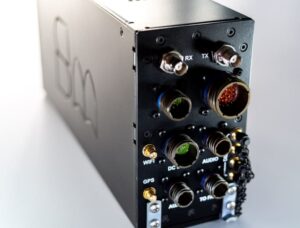


 Smith Myers has confirmed that the company will be launching several new products in its ARTEMIS range of mobile phone detection equipment at the 2022 Farnborough air show. The ARTEMIS systems are designed for use on airborne SAR (search and rescue) platforms such as UAVs (unmanned aerial vehicles).
Smith Myers has confirmed that the company will be launching several new products in its ARTEMIS range of mobile phone detection equipment at the 2022 Farnborough air show. The ARTEMIS systems are designed for use on airborne SAR (search and rescue) platforms such as UAVs (unmanned aerial vehicles).
The new products include:
T-A – Fully qualified to RTCA DO160 (G), this new addition to the ARTEMIS family offers users a merging of mobile phone detection, location and communication along with dual band maritime AIS and COSPAS SARSAT in a single 4.2kg unit.
Nathan Herbert, Senior Development and Integration Engineer at Smith Myers, commented: “Incorporating all these capabilities into a single unit was an obvious evolution of the Artemis product range. The ability to directly detect and locate Emergency Position Indicating Radio Beacons and Personal Locator Beacons (COSPAS SARSAT) while simultaneously performing the same actions with mobile phones will be invaluable on Search & Rescue or Disaster Relief Missions. Additionally the fusion of cellular and AIS sensor data in a single user interface/analysis tool opens the path to more effective and efficient maritime patrol operations whilst reducing operator workload.”
Covering all global cellular frequencies and technologies, the T-A matches the ranges achieved by the earlier ARTEMIS system, identifying, locating and communicating with mobile handsets at ranges in excess of 30Km.
T-U – Offers exactly the same cellular capability as the T-A in a low-SWaP (size, weight and power) 1.4kg housing. This new system is designed for medium to large UAS and is also fully qualified to RTCA DO160 (G) for use on manned aircraft. The single I/O makes integration simple and economical and the zero airflow design offers integrators maximum flexibility. Again, the T-U covers all global cellular frequencies and technologies proving effective at ranges greater than 30km.
ARTEMIS turns any mobile phone into a rescue beacon, only requiring two small antennas to generate a latitude/longitude fix at ranges in excess of 30km , offering an effective alternative to traditional airborne sensors and direction-finding systems. Features of the system include:
- Texting and calls in no service areas
- Automatic cueing of EO/IR sensors
- Deployment as a stand-alone with embedded mapping or integrated with leading mission system providers
- Making missions in low light/ IMC (Instrument Meteorological Conditions) safer and increasing the odds for a positive outcome
- Available in several SWaP configurations for manned/unmanned platforms
ARTEMIS simulator – allows creation of different real-world scenarios through a simple intuitive interface. This includes creating many simulated mobiles in and out of coverage, and simulated 2G, 3G, 4G and 5G mobile networks, all of which behave as they would in the real world. The items created can easily be dragged onto a worldwide map. When combined with the ARTEMIS software the mobiles can be located just as they would in a real mission. This makes the ARTEMIS simulator ideal for training, integration testing and post-facto mission analysis.
Simon Alford, Senior Software Engineer, explained: “Within Smith Myers we use the simulator extensively to test and refine our own software as it gives the opportunity to repeatedly ‘fly’ missions with very realistic results.”
“Using a real instance of the ARTEMIS software running alongside a software simulator we have created a powerful training tool that will allow operators to practice and repeat the techniques and tactics in a classroom environment prior to flying with the live system. This will ensure that the operator can concentrate on the live operation instead of worrying about the operation of the User Interface.”
Combining the simulator with the built-in flight path creator, the operator and pilot can coordinate to ensure the missing person is found as quickly and safely as possible.
In conclusion, Andrew Munro, Director at Smith Myers, noted: “These past few years have seen an impressive uptake in the ARTEMIS product offering across SAR applications through valued integrator partners and direct end users. This multi-channel approach allows us to be remain flexible and agile in such a dynamic market, where already we have become regarded as the industry standard.”
ARTEMIS’s global customer base includes deployment with the Royal Norwegian Airforce for Search and Rescue duties with the Leonardo AW101 SAR Queen, and has received many international awards, including the coveted Royal Aeronautical Society Silver medal. Current areas of interest include Western and Eastern Europe, North America and Asia Pacific.





Related Posts
New Drone Fires Thales Missile in Unmanned Air Combat Milestone
UAS Startup Accelerator Awards 3M in Funding
US Navy Orders Unmanned Tactical Resupply Aircraft